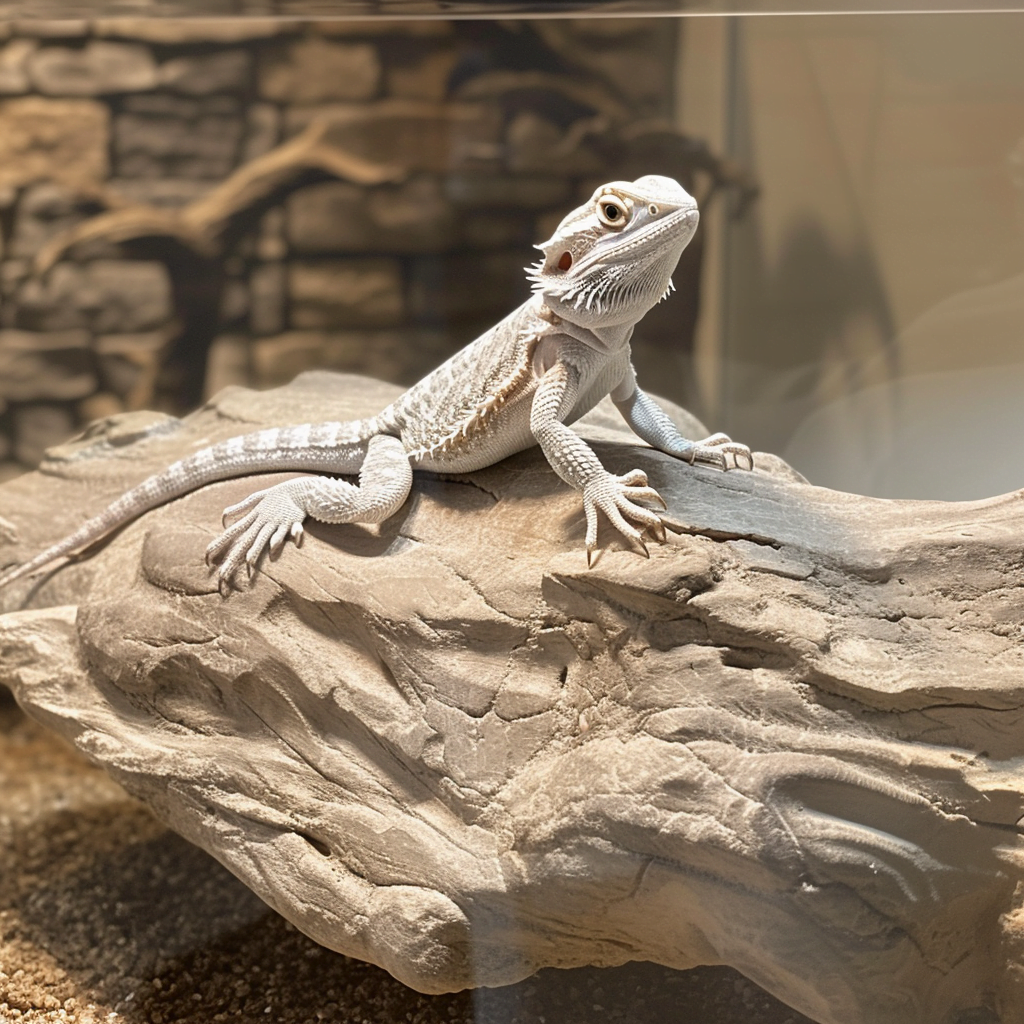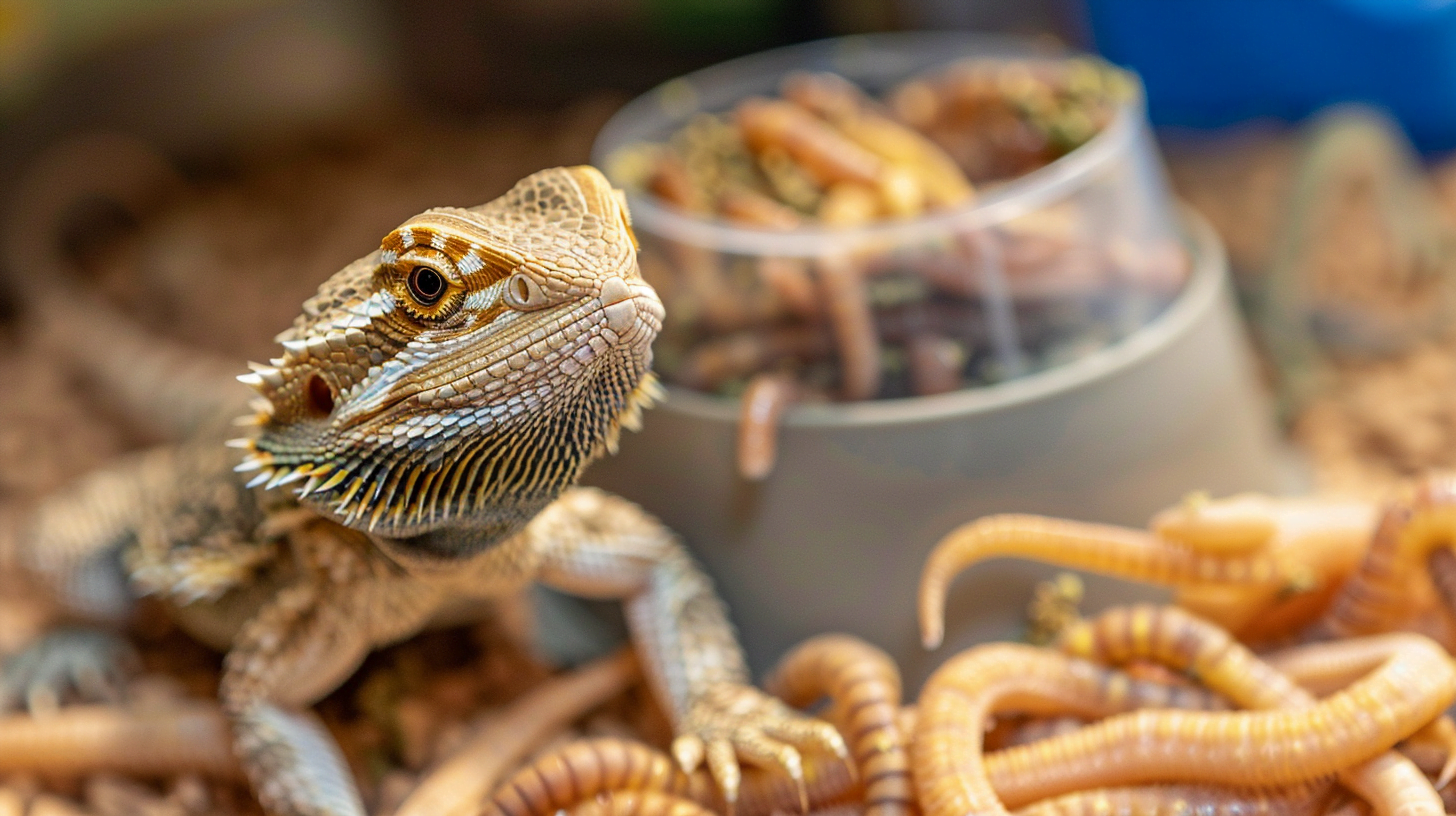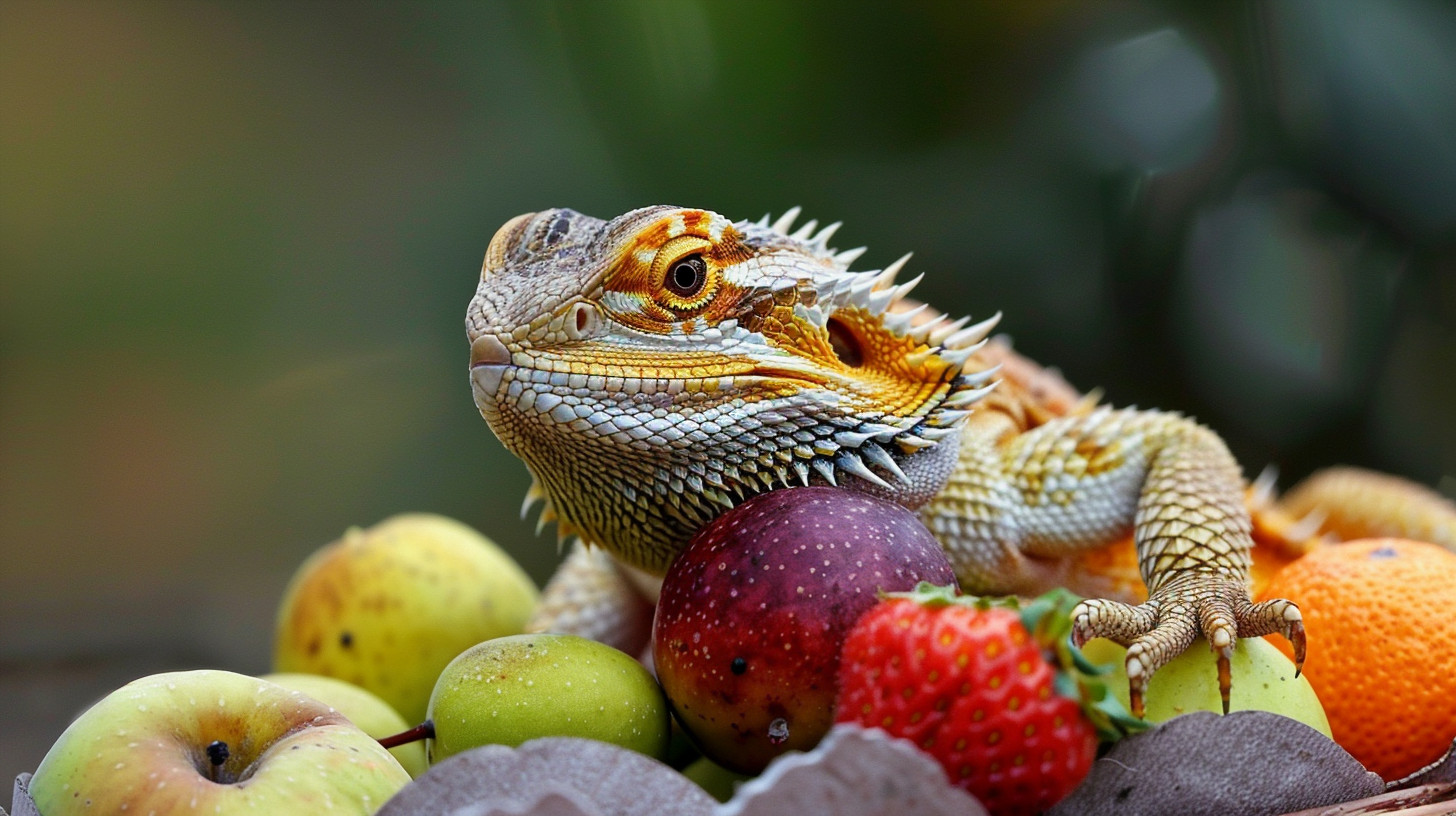It can be an alarming sight – your once vibrantly colored bearded dragon has turned pale and lost its healthy complexion. As a caring bearded dragon owner, you’re probably wondering what would cause this change and whether your beardie is sick. There are a few potential reasons why a bearded dragon would lose its color. So let´s answer you´re question “Why Is My Bearded Dragon Pale?”
Normal Color Changes in Bearded Dragons
Bearded dragons utilize color changes to regulate their body temperature. As ectotherms that rely on external heat sources to warm their bodies, bearded dragons will become darker when absorbing heat and paler when cooler. Their colors can shift rather quickly in response to temperature fluctuations.
In addition, some natural fading of vibrant colors can occur as a bearded dragon ages. The bright oranges and yellows of juveniles may mute or turn more whitish as they transition into adulthood. However, a sudden loss of color at any age is not normal and may signal an underlying issue.
Signs of Stress or Illness Along with Paleness
Paleness in combination with the following signs can indicate illness or significant stressors:
- Lethargy, lack of normal activity
- Loss of appetite or interest in food
- Changes in bowel movements
- Swelling around limbs/joints
- Discolored or retained sheds
If your bearded dragon is demonstrating additional symptoms along with paleness, it needs veterinary attention. Do not delay seeking help from an exotic animal vet, as reptiles can deteriorate quickly once sick.
Common Illnesses That Cause Paleness
There are a few common health conditions that may manifest with increased paleness or loss of color in bearded dragons.
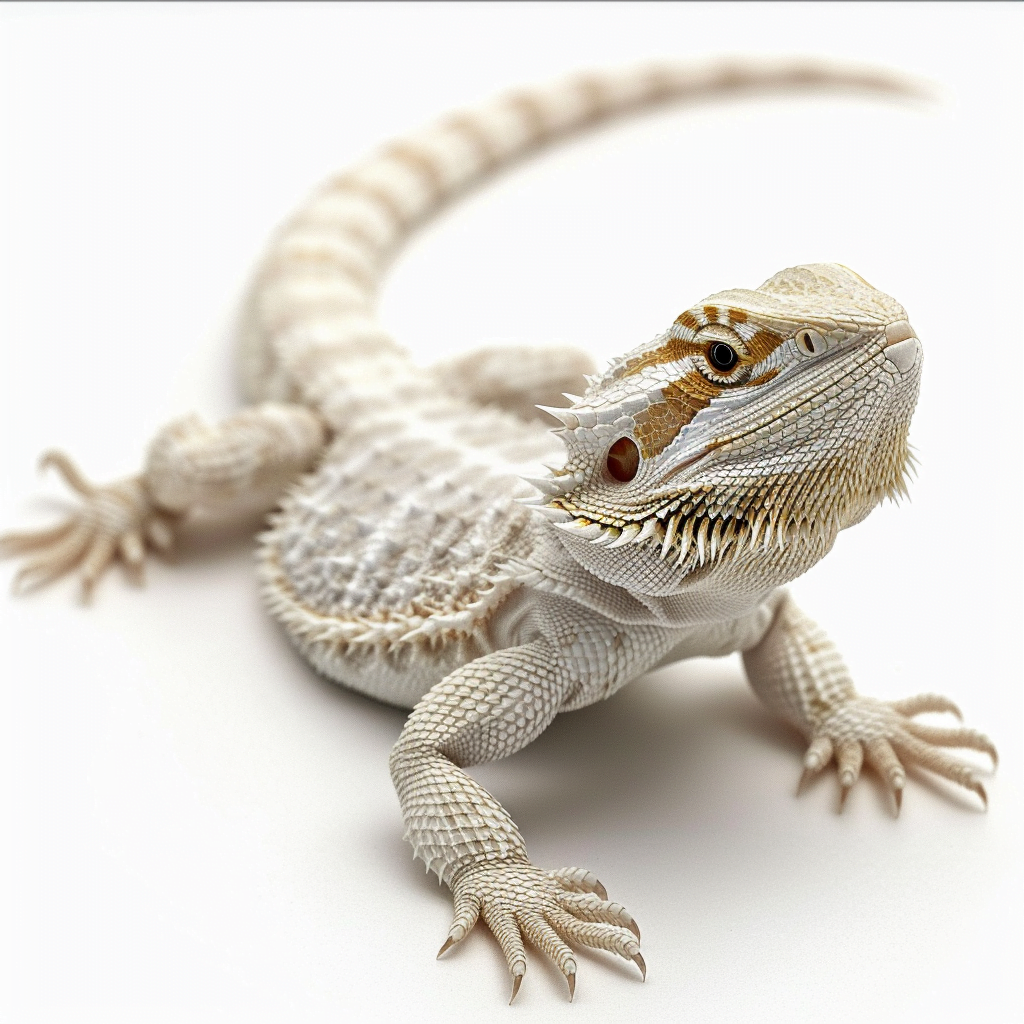
Metabolic Bone Disease
Metabolic bone disease (MBD) is caused by an improper balance of calcium, phosphorus, and vitamin D3. Without enough calcium or vitamin D3, a bearded dragon cannot properly mineralize its bones and will begin to show deficiencies.
Symptoms
- Weakness, rubbery legs
- Swollen limbs or joints
- Paleness
- Lethargy
- Poor appetite
If MBD progresses, bearded dragons can suffer from fractures and deformities.
Causes
MBD usually stems from dietary deficiencies:
- Lack of proper calcium supplementation
- No vitamin D3 provided
- Inadequate UVB lighting for vitamin D3 synthesis
Treatment
- Veterinary exam, blood work, and radiographs to assess level of damage
- Correct diet with proper calcium and vitamin D3
- Possible calcium injections or other supportive therapy
With quick treatment, mild cases of MBD can be reversed if caught early. However, the damage cannot be undone in severe, long-term cases.
Parasites
Certain parasites can infest a bearded dragon’s gastrointestinal tract and cause illness. Two common examples include:
Coccidia – Protozoa that attack the intestinal lining, causing diarrhea and dehydration.
Pinworms – Roundworms that migrate out the vent and cause intense irritation.
Symptoms
- Paleness
- Swollen abdomen
- Lack of appetite
- Irritation around vent
- Abnormal stools
Causes
Parasites spread through inadvertent fecal-oral transmission. Eggs can persist in the enclosure through tiny traces of waste.
Treatment
- Anti-parasitic medications prescribed by a vet
- Thorough disinfection of enclosure with ammonia-based cleaner
- Fecal test to ensure parasites cleared
Respiratory Infections
Bacterial, fungal, or viral respiratory infections can also lead to paleness, especially of the mucus membranes.
Symptoms
- Pale or discolored mucus in mouth
- Labored breathing
- Loss of appetite
- Lethargy
- Discharge from nostrils or mouth
Causes
- Unsanitary enclosure allowing buildup of harmful microbes
- Stress weakening immune system
- Introduction of novel pathogens
Treatment
- Veterinary prescribed antibiotics, antifungals, or other medications
- Address underlying factors impairing immune function
- Ensure proper temperatures and sanitation
Environmental Causes of Paleness
Sometimes an illness isn’t to blame. Your bearded dragon’s habitat may need some adjustments.
Improper Heating
Without a proper basking zone temperature (100-110°F), bearded dragons cannot effectively thermoregulate. Their colors will fade as their bodies cool down.
- Verify basking zone with infrared temperature gun
- Adjust heat lamp wattage or height as needed
- Ensure ambient cool side temperatures ~80°F
Inadequate UVB Lighting
In addition to heat, bearded dragons require UVA/UVB light for calcium metabolism. Without UVB rays, they cannot synthesize vitamin D3 for proper calcium absorption.
- Check UVB bulb for darkened sections or flickering – replace bulb every 6 months
- Ensure UVB bulb provides adequate gradient over basking zone – rating of 10.0-12.0%
- Provide 10-12 hours per day of UVB exposure
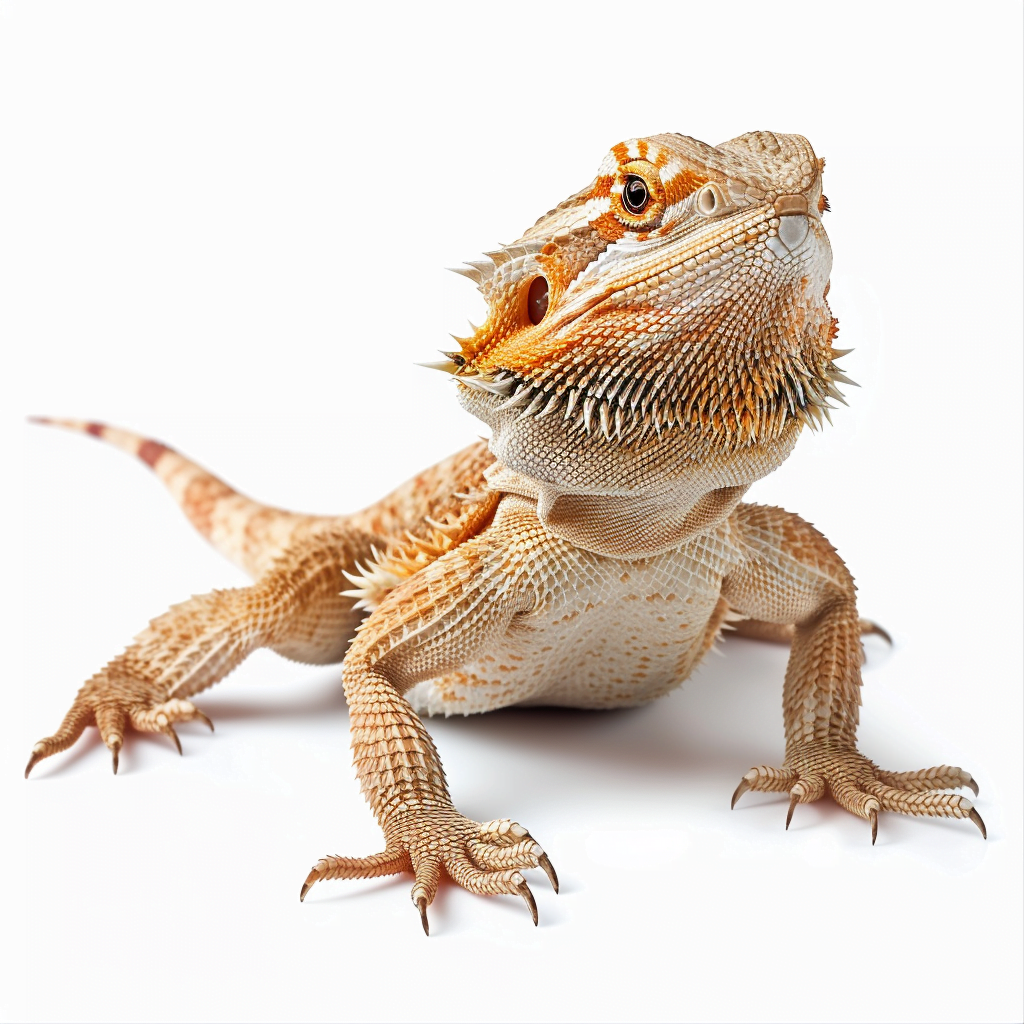
Dietary Causes of Paleness
An imbalanced diet can also cause your bearded dragon to turn pale from deficiencies or organ stress.
Lack of Proper Nutrition
Bearded dragons need a varied diet rich in fruits, vegetables, proteins, vitamins, and minerals. Feed juveniles up to 3 times per day and adults 1-2 times per day.
Solutions
- Increase dark, leafy greens which are higher in calcium – collard greens, mustard greens, turnip greens
- Add more vitamin A-rich produce like sweet potato, carrots, mango
- Provide a quality protein source 2-3 times weekly – gutloaded insects, worms, roaches
Improper Calcium/Vitamin D3 Intake
Even with balanced meals, additional calcium and vitamin D3 supplementation is vital.
Solutions
- Lightly dust insects with calcium powder at every 1-2 feedings
- Use multivitamin dust with vitamin D3 1-2 times weekly
- Consider Miner-All I indoor formula for better calcium absorption
When to See the Veterinarian
If your bearded dragon does not regain its color within 2 days of adjusting its environment and diet, seek assistance from an exotic animal veterinarian immediately. Reptiles often mask symptoms until an illness has progressed too far, so do not delay.
With some adjustments to care and a thorough veterinary workup, you can get your happy, colorful companion back to good health. Stay vigilant for any signs of illness and keep up with preventative care.
